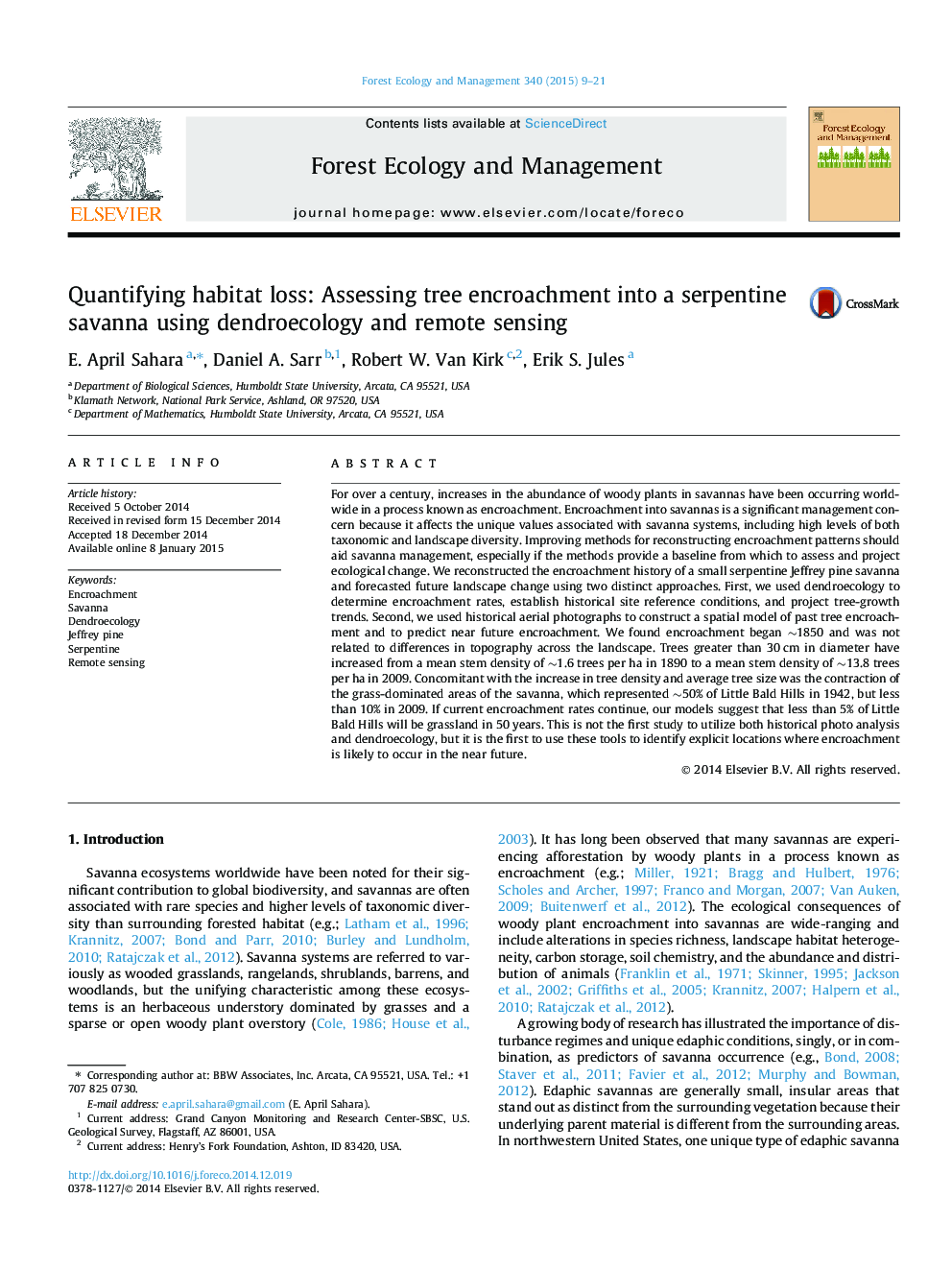| کد مقاله | کد نشریه | سال انتشار | مقاله انگلیسی | نسخه تمام متن |
|---|---|---|---|---|
| 86337 | 159180 | 2015 | 13 صفحه PDF | دانلود رایگان |
• We used dendrochronology to document encroachment into a pine savanna.
• We also used aerial photographs beginning in 1942 to document encroachment.
• Tree densities increased from ∼1.6 to ∼13.8 tree/ha between 1890 and 2009.
• Open grassland has dropped from ∼50% in 1942 to ∼10% in 2009.
• Model predictions suggest <5% of the area will be open grassland in 50 years.
For over a century, increases in the abundance of woody plants in savannas have been occurring worldwide in a process known as encroachment. Encroachment into savannas is a significant management concern because it affects the unique values associated with savanna systems, including high levels of both taxonomic and landscape diversity. Improving methods for reconstructing encroachment patterns should aid savanna management, especially if the methods provide a baseline from which to assess and project ecological change. We reconstructed the encroachment history of a small serpentine Jeffrey pine savanna and forecasted future landscape change using two distinct approaches. First, we used dendroecology to determine encroachment rates, establish historical site reference conditions, and project tree-growth trends. Second, we used historical aerial photographs to construct a spatial model of past tree encroachment and to predict near future encroachment. We found encroachment began ∼1850 and was not related to differences in topography across the landscape. Trees greater than 30 cm in diameter have increased from a mean stem density of ∼1.6 trees per ha in 1890 to a mean stem density of ∼13.8 trees per ha in 2009. Concomitant with the increase in tree density and average tree size was the contraction of the grass-dominated areas of the savanna, which represented ∼50% of Little Bald Hills in 1942, but less than 10% in 2009. If current encroachment rates continue, our models suggest that less than 5% of Little Bald Hills will be grassland in 50 years. This is not the first study to utilize both historical photo analysis and dendroecology, but it is the first to use these tools to identify explicit locations where encroachment is likely to occur in the near future.
Journal: Forest Ecology and Management - Volume 340, 15 March 2015, Pages 9–21
